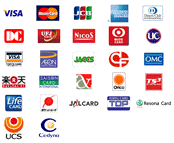Even if a project or commission is small, the formal schedules and written terms of the commission keep your projects on track and professional. Payment terms and agreement specifying the payment installation agreement. For commissioned works, artists typically receive fifty percent of the pre-agreed price and fifty percent when the order is complete. If a commissioner is not satisfied with the form of a work of art and audits are included in the contract, he or she may leave an agreement or give his or her opinion. Then, schedule your check-in with reminders based on your schedule so you don`t miss any important appointments with your commissioner. When reviewing or creating a commission contract, be sure to cover more than the basic topics of a commission contract. More is not less. The structure and details make your relationship with your customer strong. You will feel supported and ready to create something. Commission contracts can help you design projects and plan your implementation process over time. A contract includes registration points to ensure that your art and the curator`s vision continue to coincide. If you`re hired to create a public art project, something for a company or organization, you`ll likely get a commission contract to review and sign.
Rights that define who owns the work after its completion, an agreement on the rights of reproduction of the work, as well as provisions on whether the work can be exhibited, loaned, etc. The more explicitly and in detail you talk about your commission contract design needs, the smoother the manufacturing process will be. Be sure to communicate your material needs and inquire about the expectations and costs of shipping, framing, and other non-artist costs. Working on the details now prevents you from finding yourself in unclear or costly future situations. A termination agreement that specifies how the agreement between the artist and the client could be terminated, as well as the terms of payment/material costs if this is the case. The schedules, records and details defined throughout the commissioning process not only ensure a successful project, but also pave the way for future orders. Just as a commission contract guarantees you payment, a commission contract guarantees the commissioner tangible benefits and opportunities to bring his commission to life and develop it. This annotated agreement template meets many of the most recent requirements and considerations of a contractual agreement to commission a work of art and is provided as a service to the domain. This document deals with a number of issues and points that are generally found in a commission agreement and is primarily intended to be a reference and educational resource. A contract is the cornerstone of understanding and agreement between an agency or person who commissions a work of art in public space and the artist who creates the commissioned art in public space.
As the field of public art has developed and matured in recent decades, various local, state, and federal laws governing contractual arrangements are becoming increasingly sophisticated, complicated, and sometimes difficult to navigate. As a result, public art contracts or contracts have also become more complex as a result. This annotated agreement template meets many of the most recent requirements and considerations of a contractual agreement to commission a work of art and is provided as a service to the domain. A timeline, including the times scheduled for ongoing art audits, ensures that you and your curator are on the same page. Depending on the amount of the commission, there may be several times for registration. While the person or party paying to create you is familiar with your work, they have a vision in mind of how it will happen. Make sure all parties are comfortable with the commission process. A proposal for a work of art that describes in detail what the commissioned work will look like. Sometimes artists add a prototype, sketch, or example of similar work. An introduction that explains the project, defines the artist and the client, and describes the specific works that will be commissioned This document provides a discussion of a number of topics and points typically found in a commission agreement, and is primarily intended to serve as a reference and educational resource.
This document is a “work in progress” and is not intended to be final or exhaustive. Comments, suggestions and other comments on this document are welcome. To provide us with your feedback, please email pan@artsusa.org. A commission contract sets out the conditions for an artist to create a commissioned work. Commission contracts usually set project dates, payment plans, requests or significant constraints of projects, and provide for registration points between the artist and the curator. Commission contracts allow the Commissioner to exercise some control over a project and contribute to a project. If you are commissioned for a private artwork, you will probably need to present your own contract. Artists and clients around the world use commission contracts. Examples of examples for creating a commission contract can be found here. Make sure you have your contracts on hand for reference.
Save contract templates and previous contracts in the My Documents section of the illustration archive to protect your business. Whenever you are asked to create a particular work for an individual, company or group, usually on a larger scale or of greater value, you should make sure to use a commission contract. Commission contracts ensure that you will be paid and that you will be paid on time. Similarly, commission contracts can guarantee payment of your material costs. The Commission`s contracts hold all parties accountable and clearly set out expectations for projects. Big projects change and change. A commission contract ensures you are paid for your time, even if a project is put on hold or if there are unforeseen circumstances. .













